Healthy Eating Guides Remain Confusing after Food Pyramid Flattened to MyPlate
The face of the USDA dietary guidelines have been modified.
The infamous food pyramid nutrition guide is gone.
It has been transformed to the plate MyPlate - a fuzzy non-symmetrical version of a pie diagram.
You couldn't recreate MyPlate on a plate with a pizza cutter. Why such a design that makes it hard to judge the relative proportions?
Why is myPlate such a strange image?
Why was the Food Pyramid flattened and downgraded to MyPyramid?
Does either the pyramid or the plate image design convey the message effectively?
Will it work? How could it be improved?
From Food Pyramid (MyPyramid) to Plate (MyPlate)
The food pyramid, introduced in 1992 in USA, has been the standard nutrition guide for America and many other countries for more than 20 years.

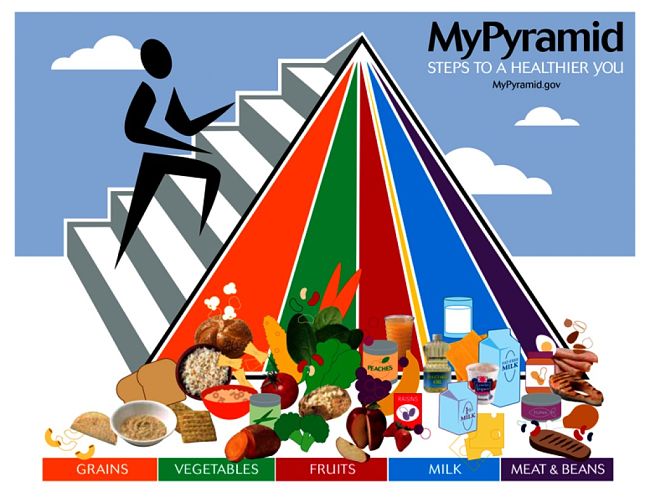
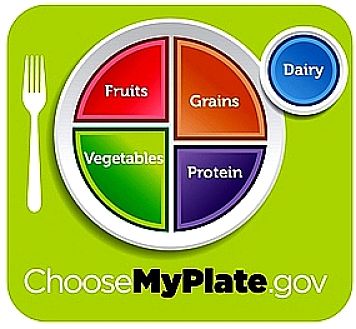
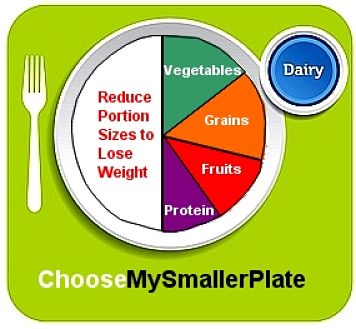
It has been universally derided by nutritionists and dietitians as too confusing and giving the wrong advice.
It was always bad visually because the pyramid or triangle does not relate to how most people judge proportions. What else is measured and represented as 'pyramids'? The symbol also implies a construction or building model where the top layers are built upon a broad foundation, for which there is no substitute. The 2005 version was no better with a series of slithers or triangles contributing the 'balanced diet'.
The new symbol has other flaws. Why break the convention of circle quadrants or 'pizza slices' that are symmetrical about the centre. The 'side-dish' of the dairy products is again very confusing. It is presumably meant to imply that diary foods are an optional extra. However many meals are served with salads, vegetables and fruits added to standard serving as side dishes, which is exactly the message the symbol is trying to convey - half the meals should be fruit and vegetables. The symbol is hard to interpret as relative proportions or percentages, which are strangely not displayed on the images.
The new release did not send a strong message about portion sizes. This could have been simply done in the way shown. There is strong research suggesting that most people eat too much and that simply changing the food proportions will not help people lose weight. People need to desize what they eat (see half plate idea). See: A Simple New Diet - Only Eat the Better Half>.
The Eatwell Plate (shown below) recommended in the UK shows the proportions of different food types needed for a healthy and well balanced diet. It uses a standard pie-diagram and images of the food. It is suggested that people strive to get this balance every day or to get the balance correct over a longer period of several days or a week.
The suggestions for the eatwell plate:
- Eat Plenty of fruit and vegetables - at least 5 portions of a various of vegetables and fruit every day.
- Eat lots of bread, potatoes, rice, pasta and other starchy foods. Focus on wholegrain varieties.
- Some milk and dairy foods
- Some meat, eggs, fish, beans and other non-dairy sources of protein
- Just a small restricted amount of foods and drinks high in fat and/or sugar
- Try to choose options that are lower in salt when you can.
Which version MyPlate or Eatwell Plate conveys the message best?
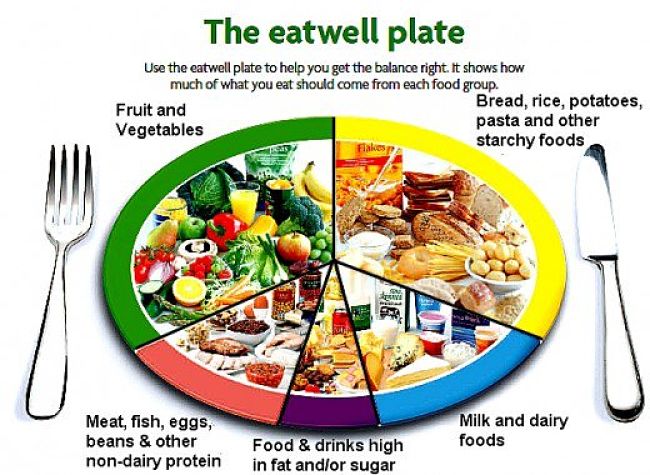
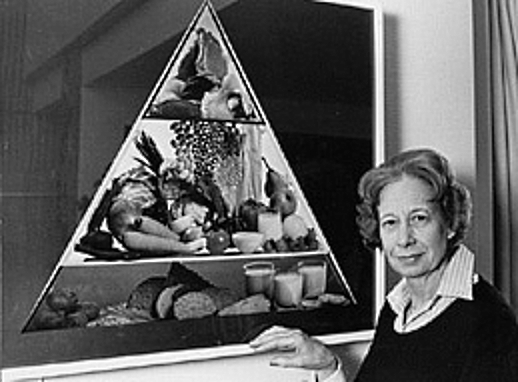
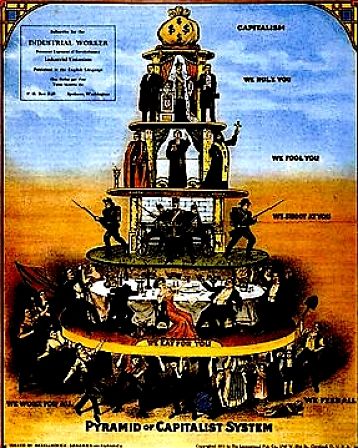
The Origins of the Food Pyramid
The concept of using a pyramid image for a nutrition guideline was probably a Swedish invention by cooking book author Anna Britt Agnsäter in the publication 'KFs: Test kitchen' (Swedish Cooperative movements Test kitchen).
The pyramid concept may itself have originated in the field of economics (see the image opposite).
In economic terms, the bottom of the pyramid (BOP) refers to the biggest, but less wealthy social economic group. In terms of the world population, this BOP group consists of about 2.5 billion people who earn on less than say about $3 per day.
The expression “bottom of the pyramid” is often applied to undeveloped countries and is used by people developing business models. Many dream of bringing the BOP group into mainstream economics and making lots of money.
The image shows An Industrial Workers of the World poster dated from 1911.
The phrase “bottom of the pyramid" was famously used by U.S. president Franklin D. Roosevelt in April 7, 1932, before the second world war in his radio address “The Forgotten Man" in which he said:

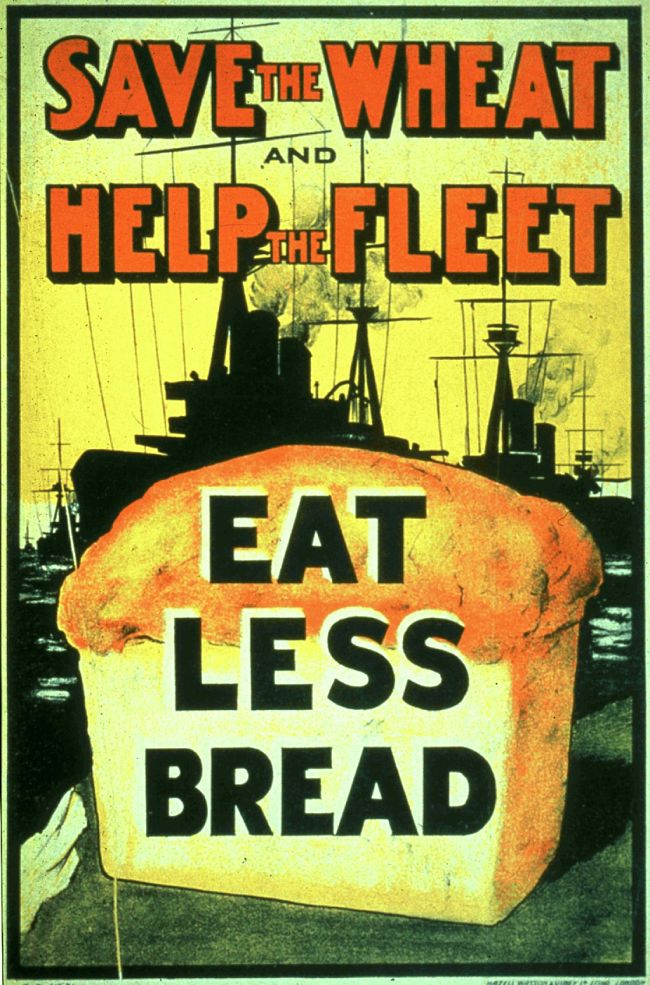
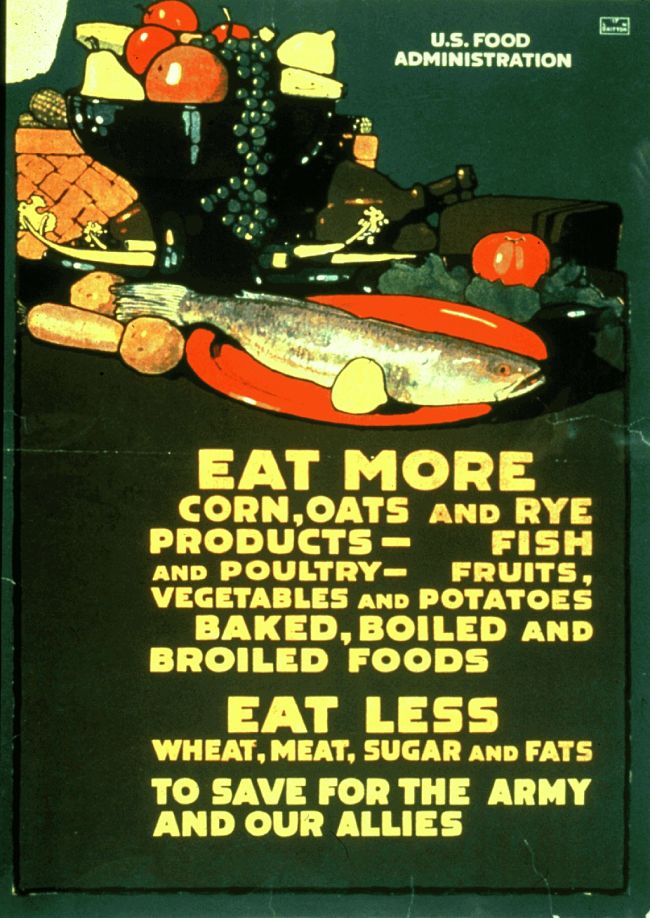
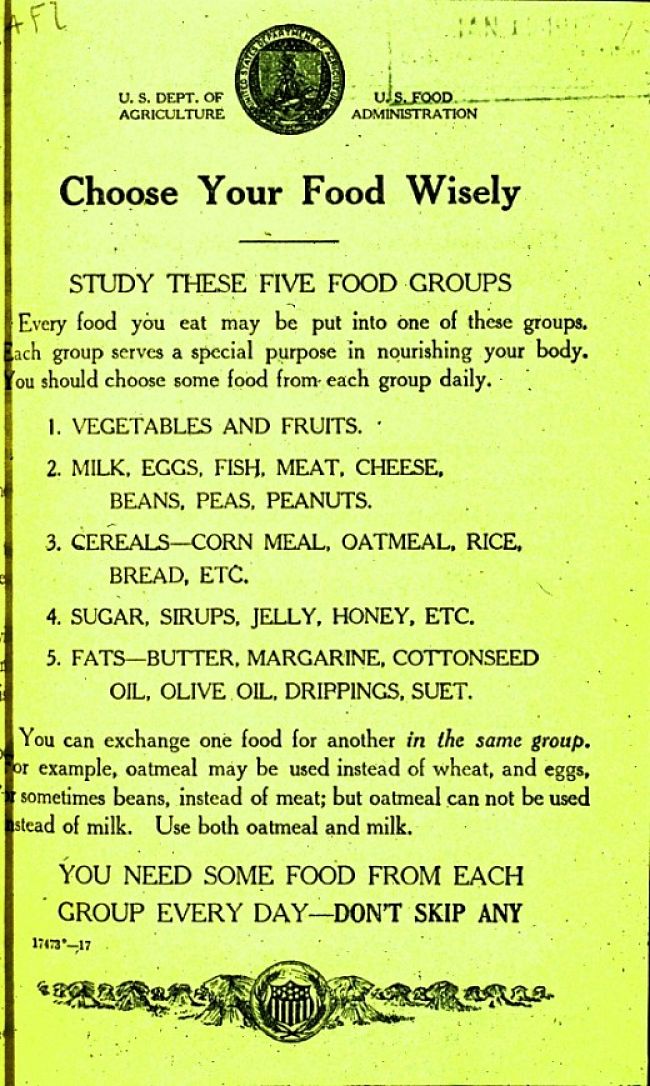

The KF Test Kitchen has its roots in World War II rationing times. In1943 many Swedish consumers complained about the poor quality of food. KF engaged farmhouse teacher Anna-Britt Agnsäter to test and suggest how food different suppliers could be better prepared and processed.
In 1972 the Swedish National Board of Health set up a working group called "Diet and cost", in response to community demands to provide advice on how to eat nutritiously at a reasonable cost. The group launched the concept of a basic food group (bread, potatoes, pasta and milk), which should form the bulk of the diet with smaller amounts of other foods (fruits, vegetables, meat and fish).
In 1973, KF Test Kitchen launched a brochure for the "Choose the right" campaign with the simple message - healthy, tasty food at reasonable prices. This message was very revolutionary. KF Test Kitchen kitchen claimed that all the basic food needs, 75% of the daily protein requirement and a half of iron and Vitamin C needs, could be supplied for a cost of only three dollars. Critics reacted strongly to the basic food concepts claiming that eating too much bread and potatoes could cause unhealthy obesity.
At a conference in Gothenburg in 1973, Anna-Britt Agnsäter gave a lecture on basic foods and discussed the problem of how to illustrate the concept of the basic group as the foundation for a diet. One of the audience suggested the idea that a triangle could illustrate the notion of a base for the diet. Anna-Britt Agnsäter continued to develop the display concepts that eventually became the food pyramid.
In September 1974 KF celebrated the 75th anniversary of their magazine which as distributed to all households in Sweden. On the center spread, was a large colour picture, showing the food pyramid for the first time.
The cooperative movement in Denmark, Norway, Finland and the Faroe Islands created their own food pyramid using the individual raw materials unique to each country. In 1977 KF Test Kitchen helped develop the Sri Lanka's food pyramid. The concept spread to West Germany and Japan.
In 1988, several USDA scientists got copies of Sweden’s food pyramid while attending an international conference, and used it as the graphical concept for the 1992 food guidelines in the US.
The old pyramid allowed individuals to consume the foods within a certain range of servings, but did not state how to interpret that choice.

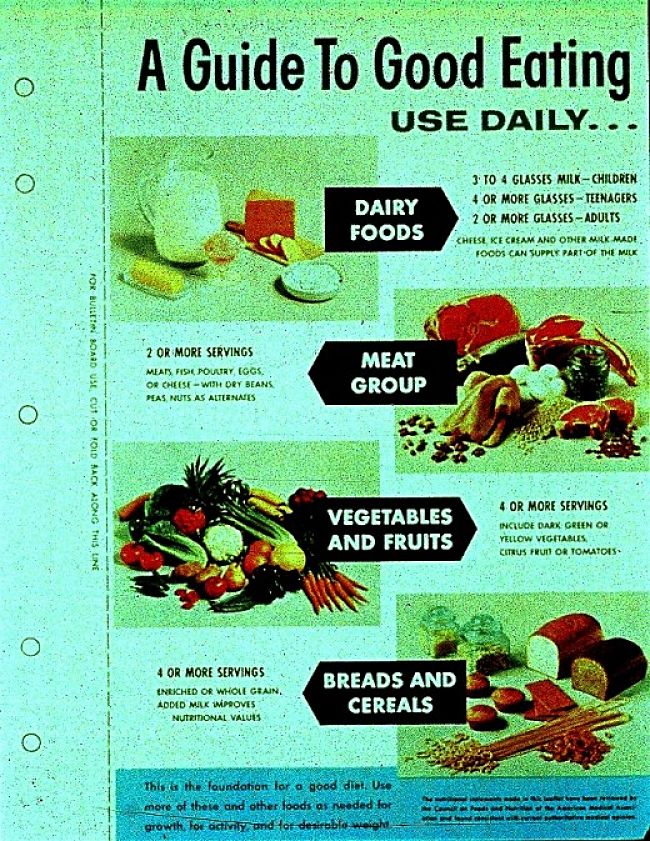
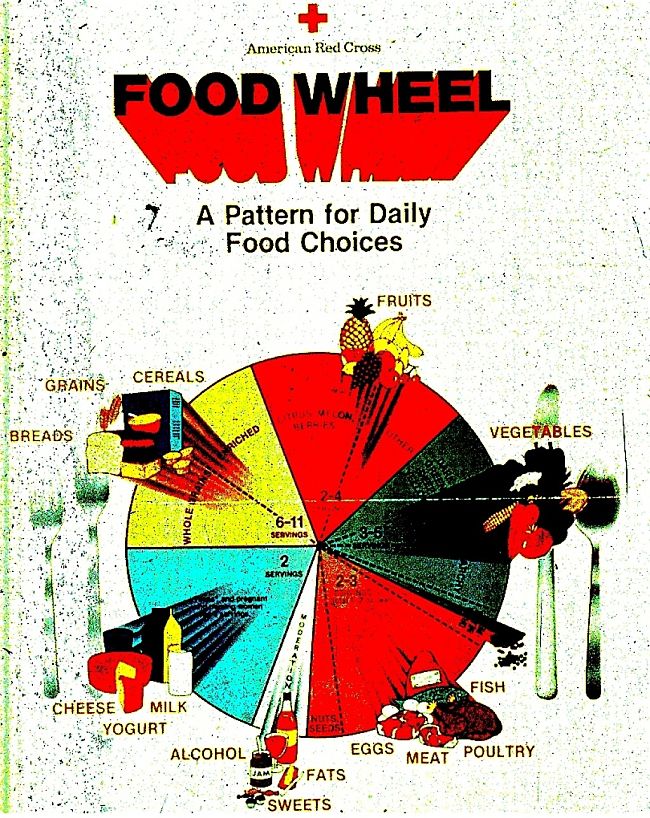
What was Wrong the Food Pyramid and Earlier Guides?
Some of the earlier attempts at developing food guidelines are shown opposite.
The original 1992 version of the USDA Food Pyramid was subject to major criticisms as being flawed and misleading and did not keep up with scientific nutritional research on foods, nutrition and human diseases.
Some of the incorrect messages it conveyed were:
- All fats are bad: However while Saturated and trans-fats are definitely bad, other fats are good an beneficial for example polyunsaturated and monosaturated fats and fats from nuts, olive oil, fish, and grains.
- All complex carbohydrates are good: This is not true and the suggestion of 6 to 11 servings of carbohydrates is probably way too much. There is no distinction between refined carbohydrates and complex carbohydrates including whole grain cereal and bread.
- Protein is protein: But some sources of protein are known to be better than others. For example, red meat is good protein, but is high in cholesterol and saturated fat; whereas chicken, turkey, fish and even pork have much lower levels of saturated fat. Beans and nuts are great alternative excellent sources of protein that are included in other groups. Protein from dairy foods is not distinguished.
- Dairy products are listed essential: This is not true, and this is why MyPlate has dairy as a side-serve.
- Potatoes are good for you: But potatoes are high in starch and calories and when served as fries can be high in fats
- There is no guidance on weight, exercise, alcohol, and vitamins are missing